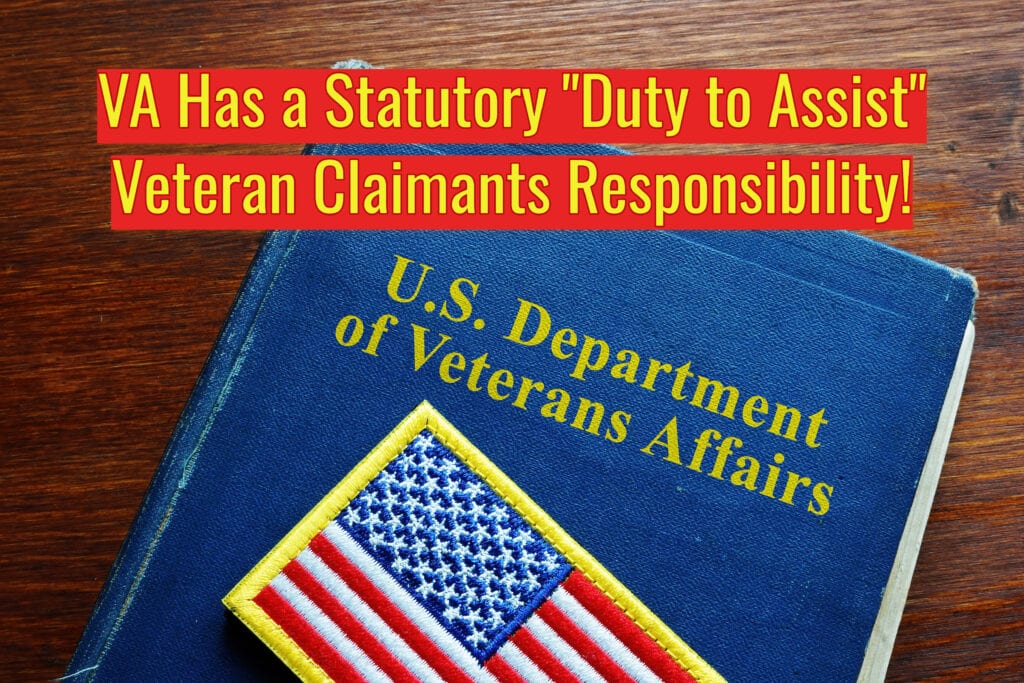Looking for Expert-Level VA Claim Answers?📱Call Us Now! 737-295-2226
In this post, veterans with a VA disability rating of 0% or higher will learn “How to Increase VA Rating and Get Your VA Disability Claim Approved Faster” using 3 little-known tips, strategies, and lessons learned from actual VA Rating Officials.
These “tried-and-true” methods work, and they will help you increase your VA disability rating in less time, even if you’ve already filed or been denied previously.
Brian Reese here, Air Force service-disabled veteran, and VA benefits expert.
Since 2016, we’ve helped over 25,000 veterans just like you win, service connect, and a get a VA rating increase (if warranted by law) with our 3-part “SEM Method” and 8-step VA Claims Insider Elite membership program process—you can read their stories here.
And we’re honored to serve over 500,000 unique visitors per month across our websites at VA Claims Insider and Military Disability Made Easy.
Even if you’ve had your VA claim denied in past, stick with it, because you’ve got options.
The VA disability process is NEVER over unless you quit!
And WE WON’T let you quit!
Yes, it sucks to be denied VA benefits you deserve for your honorable service.
It can feel like a “gut-punch,” especially because it feels like you’re being called a liar—and you aren’t.
The truth is, VA disability claims are denied for many reasons, most of which can be corrected quite simply, and you can get your VA claim approved faster and more accurately by following these 3 simple tips … even if you’ve already filed or been denied VA benefits.
But before we go any further, we need to cover the 3 critical elements you must prove in ALL VA disability claims.
- How to Increase VA Rating in Less Time – 3 Key Elements You Must Prove in ALL VA Disability Claims
- How to Increase VA Rating Expert Tip #1: HELP the VA Rater help YOU! Make it easy for the VA to rate and approve your VA disability claim
- Increase VA Disability Pro Tip #2: Document in a written statement WHERE the VA Rater can find evidence in your records
- Increase My VA Disability Rating Tip #3: You MUST go to (and be prepared for) your VA Compensation and Pension (C&P) exam
- Top 10 C&P Exam Tips for 2022 – Learn How to Increase VA Rating [FAST!]
- Now What? Next Steps to Increase Your VA Disability Rating Online (And Avoid Painful Denials…)
- Filing For VA Disability Increase Online (Video Tutorial!)
- Get Fast Help With VA Disability Increase – “Veterans Helping Veterans!”
- About the Author
How to Increase VA Rating in Less Time – 3 Key Elements You Must Prove in ALL VA Disability Claims

- (#1) Medical diagnosis of a disability condition (this can be in Service Treatment Records (STRs), VA medical records, OR any private records, but it needs to be in a medical record somewhere). It helps to have a more “current” medical diagnosis, although it’s not required.
- (#2) Your disability condition was caused or made worse by your ACTIVE-DUTY military service (“Nexus”) OR it’s proximately due to or aggravated by ANOTHER service-connected disability rated at 0% or higher for secondary service connection.
- (#3) Current symptoms of the disability condition into the present day, aka, “Severity of Symptoms” (How severe are your symptoms and how is your disability condition negatively impacting your work, life, and social functioning?)
First, you MUST have a medical diagnosis of a disability condition in a medical record.
The medical diagnosis does NOT have to be in your Service Treatment Records (STRs), but it must be somewhere, in either VA medical records or private treatment records.
If you think you have a disability condition, but don’t yet have it medical diagnosed, GET YOUR BUTT TO THE DOCTOR!
Without a medical diagnosis, you’re dead-in-the-water, and your VA disability claim will be denied.
The #1 best way to prove you have a medical diagnosis of a disability is to upload medical records (this can be in VA medical records or private treatment records) showing a current medical diagnosis in support of your Fully Developed Claim to the VA.
Second, you must be able to prove to the VA that your disability condition (if medically diagnosed) was caused or made worse by your active-duty military service (this is the “Nexus,” which means link or connection) OR it’s proximately due to or aggravated by ANOTHER service-connected disability rated at 0% or higher for secondary service connection.
The #1 best way to prove service connection to the VA is to get an Independent Medical Opinion, aka, Medical Nexus Letter from a private healthcare provider.
If you’ve ever logged into your eBenefits account, clicked the “Disabilities” tab on the left-hand side of the screen, and seen various disability conditions that say, “Not Service Connected,” the VA denied service connection.
The VA is telling you they couldn’t find a “Nexus” for service-connection on at “at least as likely as not” basis, which is a required element by law to be eligible for VA disability benefits.
Guess what veterans?
The VA makes mistakes every day, all day, and they’re trying to help you, but you’ve got to help them, too!
Third, your final VA rating percentage for a particular disability comes down to your “Severity of Symptoms.”
Generally, the more severe your symptoms, the higher the VA rating percentage for that disability.
You can see what I mean by paying close attention to the symptoms and keywords tied to various VA disability rating percentages in 38 CFR, Part 4, the Schedule for Rating Disabilities.
When writing your personal statements and VA Buddy Letters, you want to explain in plain English your current symptoms of the disability condition into the present day, aka, “Severity of Symptoms.”
The #1 best way to prove your current severity of symptoms is to write a personal statement in support of your claim and don’t hold anything back – you’ve got to tell the VA how you are on your very worst days. Medical evidence (with symptoms clearly documented) and Buddy Letters are very helpful, too.
Specifically, you need to talk about how your disability condition is limiting/affecting your work, life, and social functioning.
Okay, now it’s time to deep dive my Top 3 Tips to Increase VA Rating and Have Your VA Claim Approved Faster and More Accurately!
How to Increase VA Rating Expert Tip #1: HELP the VA Rater help YOU! Make it easy for the VA to rate and approve your VA disability claim

I’ve had personal conversations with 100s of current and former VA Raters over the past 5 years, and they have a common message for you veterans … “We’re trying to help approve your VA claim, but you must help us help you!”
If you don’t have any evidence, specifically, medical evidence – don’t submit a VA claim – because it’s just going to get denied.
If you do have evidence, be specific with what you’re claiming, and spell-it-out for the VA Rater – you want to make it easy for them.
For example, don’t just submit a VA claim for “back condition,” when it’s actually “lumbar strain, severe, with pain and limitation of range of motion.”
I realize you’re probably not a doctor, so if you don’t know the exact name of your disability condition, search through your medical records to find the name and ICD code of your medical diagnosis.
Next, search and find your disability using the codified federal law that governs all disability compensation claims, CFR Title 38 Pensions, Bonuses, and Veterans’ Relief, Part 4 Schedule for Rating Disabilities
Here’s an example of how to define your disability for the VA Rater:
In a Statement in Support of a Claim for PTSD, instead of writing “I have PTSD and it’s …” you can say something like:
Post-Traumatic Stress Disorder – Combat – Due to my deployment to Iraq in 2003.
In the example above, you’re telling the VA you have “Combat PTSD and it’s due to a combat deployment” for direct service connection.
And then list what happened to you in-detail, how you were affected by the combat deployment, how you feared for your life (if you did), your current treatment/therapy attempts, how your mental health condition impairs your work, life, and social functioning along with the severity of your mental health symptoms into the present day.
Increase VA Disability Pro Tip #2: Document in a written statement WHERE the VA Rater can find evidence in your records
It’s a best practice to write a Statement in Support of a Claim for each condition you’re claiming and document the specific page numbers in your Service Treatment Records, VA medical records, and/or private medical records where a VA Rater can find evidence of the disability along with current symptoms.

Yes, the VA has a legal “Duty to Assist” requirement, but guess what fellow veterans?
VA Raters are insanely busy people, sometimes trying to rate 5-10-15 different veteran’s claims on any given day.
Furthermore, many VA employees are teleworking due to COVID-19, and access to internal VA systems from home is spotty at best.
For example, VA networks are incredibly slow, and the Veterans Benefits Management System (VBMS) crashes often.
VA employees on the VA benefits side, such as Veteran Service Representatives (VSRs) and Rating Veteran Service Representatives (RVSRs), are constantly being pushed to rate claims faster and more accurately … all while trying to navigate the myriad of federal statutes, VA regulations and directives, BVA case law precedent, new VA policies and procedures, and complex medical terminology when they (VA Raters) aren’t doctors or lawyers … and of course, they have rigid daily production quotas to meet.
So, when you add all this up, VA employees are subject to high-stress jobs in often unhealthy, toxic work environments…
With these factors in mind, do you think VA Claim Adjudicators have the time to try go track-down vital information on your behalf?
I think not.
This is why we recommend veteran’s file their own Fully Developed Claim inside their VA.gov account.
With the VA’s Fully Developed Claim program, your VA claim will be decided faster and more accurately because YOU maintain control.
You don’t want to rely on the VA to go looking for information because, chances are, they won’t get it for you.
YOU must take control of your VA disability claim and own everything in your world.
By preparing and filing your own Fully Developed Claim, you’re telling the VA: “Hey VA, all the evidence you need to make a VA rating decision is attached to this claim submission, and you don’t need to go look anywhere else!”
Make sure you attach critical documents in support of your VA claim, such as Service Treatment Records, VA medical records, private medical records, personal statements, VA Buddy Letters, Medical Nexus Letters, Medical Research Studies, X-rays / MRIs, Labs, and any other documents to help “prove” a specific in-service incident or injury.
Here’s a SECRET tip: If you’re trying to increase your VA rating, a picture is worth a thousand words!
Take pictures of your disability condition and upload them to VA.gov in support of your claim.
For example, I recently filed a VA claim for bilateral Plantar Fasciitis.
I took numerous pictures of both feet and heels to show the VA Rater my flat feet, fallen arches, overpronation, yellow calluses, redness and inflammation, and cracking.
I also uploaded recent X-ray images I had done at the VA of both my feet, which showed a calcified heel spur in my left foot.
Increase My VA Disability Rating Tip #3: You MUST go to (and be prepared for) your VA Compensation and Pension (C&P) exam
After you file your VA disability claim, chances are you’ll be contacted and scheduled for one or more C&P exams with contracted VA examiners who work for LHI, VES, or QTC.
Contrary to what you might have heard, you MUST go to your C&P exams.
If you miss your C&P exam, the VA Rater has the authority to deny your claim outright.
If the scheduled date and time for your C&P exam don’t work for you, make sure to call the contractor back right away (listed on the packet mailed to you), speak to an agent, and ask for a different date and time for your appointment.
Why does the VA schedule veterans for Compensation and Pension exams?
The VA schedules one or more C and P exams to obtain the following information for your VA claim file:
- Medical evaluation by a healthcare provider who completes the online DBQ for the disability in question
- C&P examiner will make or confirm a medical diagnosis of a disability condition (don’t rely on them to make a first-time diagnosis)
- When did the veteran’s symptoms begin, and is there a clear “Nexus,” which means link or connection?
- The C&P examiner will give his/her “medical opinion” for service connection (“at least as likely as not” is the minimum threshold)
- How bad are the veteran’s symptoms today including pain, any limitations, and functional impairment or loss?
- Is the veteran telling the truth?
By the way, the C&P exam is the #1 most important day in the entire VA disability claims process.
Why?
Because VA Raters rely (almost) solely on the results of your C&P exam…sadly.
And you must be ready to FIGHT BACK if you get a bad C&P examiner.
Step-by-step instructions for how to punch back and get a new C and P exam are inside the VA Claims Insider Elite membership program.
Here are a couple more expert-level tips involving recent changes to VA C&P exams for 2022:
For disability conditions that don’t necessarily require an in-person exam, you may get a Telehealth C&P exam (e.g., some mental health conditions), and/or an Acceptable Clinical Evidence (ACE) records only review C&P exam (e.g., Sleep Apnea, GERD, IBS, Migraine Headaches, among others).
- Telehealth C&P exams are just like in-person exams only done over video-teleconference. I fully expect telehealth C and P exams will become the new norm, especially during the pandemic.
- ACE exams are faster than regular C and P exams but sometimes lack important context because the veteran doesn’t get to see or speak with the examiner.
Top 10 C&P Exam Tips for 2022 – Learn How to Increase VA Rating [FAST!]
- You must be OPEN, HONEST, and TRUTHFUL at all times!
- The C&P examiner is NOT your friend…no small talk
- You must know what’s in your medical records, personal statements, and Buddy Letters
- Review any DBQs and Medical Nexus Letters (Independent Medical Opinions)
- Deep dive: CFR, Title 38, Part 4, the Schedule for Rating Disabilities
- Do NOT have your best day—tell the examiner how you are on your very worst days
- Be “UNCOMFORTABLY VULNERABLE…” and don’t hold anything back
- Mental Health Conditions: Occupational/Social Impairment + Severity of Symptoms
- Any Other Conditions: Pain/Limitation of Range of Motion + Severity of Symptoms
- Be ready to talk about how your disability was caused/made worse by your active-duty service
==> You might also like my blog post called: Top 7 Tips to Prepare for Your VA C&P Exam
Now What? Next Steps to Increase Your VA Disability Rating Online (And Avoid Painful Denials…)
So many veterans want to know how to increase va rating and avoid painful disability claim denials, and if you believe you’re entitled to a VA rating increase, the first thing you should do is open a “Notice of Intent to File” in your VA.gov account.
It takes less than 2 minutes to do this.
The Notice of Intent to File is important because you’re telling the VA, “Hey, I’m about to file a claim,” and thus you’re able to reserve your filing date.
You then have 1 year to get your claim submitted to the VA.
For example, let’s say you open a new claim today, which automatically opens a notice of intent to file for you, but then the VA takes 180 days to review the evidence and rate your claim.
If 180 days from now, the VA grants you a rating increase, you’ll get back paid to TODAY.
In this example, that’s 6 months of additional tax-free compensation!
Need more help?
You can also watch my step-by-step video tutorial for how to file for a VA disability increase online.
Filing For VA Disability Increase Online (Video Tutorial!)
Get Fast Help With VA Disability Increase – “Veterans Helping Veterans!”
At VA Claims Insider, we help fellow Veterans celebrate LIFE CHANGE by getting you the VA rating increase you deserve by law.
- FOR Veterans, BY Veterans! We’re the largest community of Veterans Helping Veterans Worldwide™
- 25,000+ disabled veterans served in our Elite membership program since 2016
- 500,000+ veterans per month utilize our free/paid educational resources
- We employ more than 150 veterans, military spouses, and veteran advocates around the world
- Average VA disability benefit increase of >30%
- 4.8/5.0 Google Reviews rating across 2,000+ total reviews
- VA disability benefits secured for veterans in all 50 states and 47 countries globally
If you’re ready to secure the VA disability claim rating and benefits you’ve earned for your honorable service to our nation, simply click the button below now to start our FREE 3-step intake process.
You’ll hear from a member of our team within minutes!
About the Author

Brian Reese
Brian Reese is a world-renowned VA disability benefits expert and the #1 bestselling author of VA Claim Secrets and You Deserve It. Motivated by his own frustration with the VA claim process, Brian founded VA Claims Insider to help disabled veterans secure their VA disability compensation faster, regardless of their past struggles with the VA. Since 2013, he has positively impacted the lives of over 10 million military, veterans, and their families.
A former active-duty Air Force officer, Brian has extensive experience leading diverse teams in challenging international environments, including a combat tour in Afghanistan in 2011 supporting Operation ENDURING FREEDOM.
Brian is a Distinguished Graduate of Management from the United States Air Force Academy and earned his MBA from Oklahoma State University’s Spears School of Business, where he was a National Honor Scholar, ranking in the top 1% of his class.




